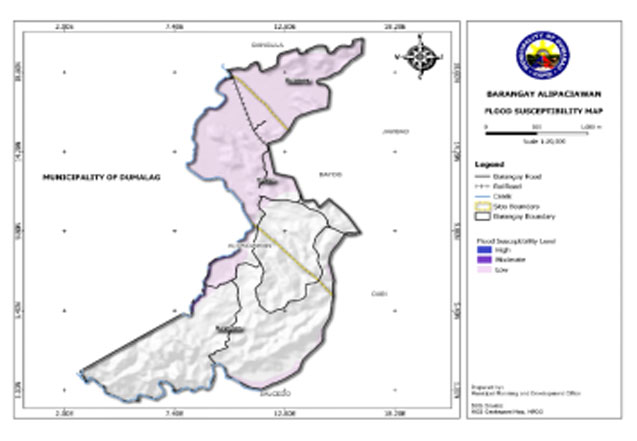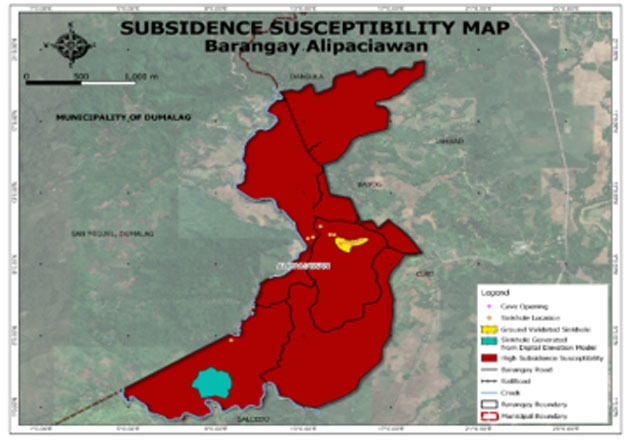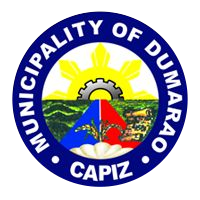Barangay Alipaciawan
 The name “Alipaciawan” is believed to have been derived from the words Ali-Pas and Wan. Ali is a man’s name, Pas means “to pass” or “to come across,” and Wan refers to gold, or bulawan in the local language. According to the story, the name emerged because the place was believed to have gold deposits beneath its hills, and there was a cow with a golden horn that lived there.
The name “Alipaciawan” is believed to have been derived from the words Ali-Pas and Wan. Ali is a man’s name, Pas means “to pass” or “to come across,” and Wan refers to gold, or bulawan in the local language. According to the story, the name emerged because the place was believed to have gold deposits beneath its hills, and there was a cow with a golden horn that lived there.
One sunny day, a group of Spanish colonizers passed through the area and encountered a man named Ali. One of the Spaniards, curious about the name of the place, asked the man in their native language. The man, thinking the Spaniards could not understand his language, decided to simplify his response. He used the syllables Ali, Pas, and Wan, which he thought would convey the essence of the place’s name.
The Spaniards, not fully grasping the nuances of the language, misunderstood and accepted the name as it was. Over time, the name was passed along and adapted through various languages and dialects, eventually becoming Alipaciawan.
Barangay Alipaciawan is a barangay in the municipality of Dumarao, in the province of Capiz. It has a total of 4, 437.1 square kilometers.
The barangay has an agricultural area of 389.49 hectares, 87.78% of its total land area. Agricultural lands consume largely for paddy rice (palay) along with corn and coconut.


Geo- physical Hazards
Alipaciawan is exposed to 3 types of hazards: rain-induced flooding with low susceptibility levels, rain-induced landslides with 2 susceptibility levels: moderate, and low, and KARST Subsidence.
An area of 16.803 hectares or 3.79% of the total land area has a moderate susceptibility level for rain-induced flooding, while 162.722 hectares or 36.67% have low-level susceptibility.
The entire barangay total land area is susceptible to low-level susceptibility for rain- induced landslide and high susceptible to subsidence.



Demographics
Household
The household population of Alipaciawan in the 2020 Census was 553 broken down into 160 households or an average of 3.45 members per household.
Population by age group
According to the 2020 Census, the age group with the highest population in Alipaciawan is 25-29, with 12.30% or 68 individuals. On the other hand, the age group with the lowest population is 75-79, with 1.27% or a total of 7individuals.
Combining age groups, those aged 14 and below, consisting of the young dependent population which includes infants/babies, children, and young adolescents/teenagers, make up an aggregate of 22.97% (127). Those aged 15 up to 64, roughly, the economically active population and actual or potential members of the workforce, constitute a total of 69.80% (386). Finally, the old dependent population consisting of the senior citizens, those aged 65 and over, total 7.23% (40) in all.
Historical population
The population of Alipaciawan grew from 537 in 1990 to 553 in 2020, an increase of 16 people over the course of 30 years. The latest census figures in 2020 denote a positive growth rate of 1.10%, or an increase of 28 people, from the previous population of 525 in 2015.
Adjacent barangays
Alipaciawan shares a common border with the following barangay(s):
- Dangula, Dumarao, Capiz
- San Miguel, Dumalag, Capiz
- Bayog, Dumarao, Capiz
- Jambad, Dumarao, Capiz
- Salcedo, Dumarao, Capiz

